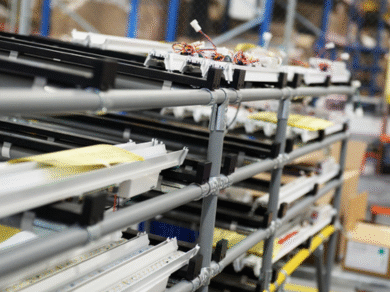Comprehensive Guide to Stainless Steel Stair Nosing Profiles

Stainless steel stair nosing profiles are essential components in modern construction and interior design. They provide durability, safety, and aesthetic appeal to staircases in residential, commercial, and industrial settings. This article delves into the various aspects of stainless steel Stair Nosing Profiles, exploring their types, benefits, installation methods, and much more.
What are Stair Nosing Profiles?
Definition and Purpose
Stair nosing profiles are protective elements installed on the edges of stairs. They serve to enhance the durability of the staircase, provide slip resistance, and offer a finished look to the steps.
Importance in Stair Design
The integration of stair nosing profiles is crucial in preventing accidents, reducing wear and tear on the stairs, and contributing to the overall design aesthetics.
Types of Stair Nosing Profiles
Bullnose Profiles
Bullnose profiles feature a rounded edge, providing a smooth transition and a classic look to staircases.
Square Edge Profiles
Square edge profiles offer a modern and clean appearance, with sharp lines that define each step distinctly.
Lipped Profiles
Lipped profiles include a small overhang, which can further protect the stair edge and enhance grip.
Custom Profiles
Custom profiles can be designed to meet specific architectural requirements or aesthetic preferences.
Materials Used in Stair Nosing
Aluminum
Aluminum stair nosing is lightweight and cost-effective, suitable for various applications but less durable than stainless steel.
Bronze
Bronze provides a unique aesthetic and good durability, though it is more expensive and requires more maintenance.
Stainless Steel
Stainless steel is known for its strength, durability, and corrosion resistance, making it ideal for high-traffic areas.
Rubber
Rubber nosing offers excellent slip resistance and is softer underfoot, often used in environments where safety is a primary concern.
Why Choose Stainless Steel?
Durability and Strength
Stainless steel stair nosing profiles are incredibly durable and capable of withstanding heavy foot traffic without significant wear.
Aesthetic Appeal
The sleek, polished look of stainless steel complements modern architectural styles, adding a touch of sophistication to any staircase.
Corrosion Resistance
Stainless steel is highly resistant to corrosion, making it suitable for both indoor and outdoor applications.
Applications of Stainless Steel Stair Nosing
Residential
In homes, stainless steel stair nosing provides a blend of safety and elegance, perfect for modern and contemporary designs.
Commercial
Commercial buildings benefit from the durability and professional appearance of stainless steel stair nosing, suitable for offices, malls, and public spaces.
Industrial
In industrial settings, stainless steel stair nosing ensures longevity and safety in environments where stairs are subjected to heavy use and harsh conditions.
Technical Specifications of Stainless Steel Stair Nosing
Grades of Stainless Steel
Different grades of stainless steel, such as 304 and 316, are used depending on the environmental conditions and required durability.
Finishes and Textures
Stainless steel stair nosing can be finished in various textures, from brushed to polished, to suit different aesthetic and functional needs.
Size and Dimensions
Stainless steel stair nosing profiles come in various sizes and dimensions to fit different types of stairs and ensure proper coverage and protection.
Installation of Stainless Steel Stair Nosing
Tools Required
Common tools required for installation include a measuring tape, saw, drill, screws, and adhesive.
Step-by-Step Guide
- Measure the length of the stair edge.
- Cut the stair nosing profile to the measured length.
- Apply adhesive to the back of the profile.
- Position the profile on the stair edge and press firmly.
- Secure with screws if necessary.
Common Installation Mistakes
Avoiding improper measurements, insufficient adhesive application, and misalignment ensures a successful installation.
Benefits of Stainless Steel Stair Nosing
Enhanced Safety
Stainless steel stair nosing enhances safety by providing a non-slip surface, reducing the risk of accidents.
Longevity
The durability of stainless steel ensures a long lifespan, making it a cost-effective choice in the long run.
Low Maintenance
Stainless steel stair nosing requires minimal maintenance, retaining its appearance and functionality with simple cleaning.
Challenges and Limitations
Cost Considerations
Stainless steel stair nosing is generally more expensive than other materials, which can be a consideration in budget-sensitive projects.
Installation Complexity
The installation of stainless steel stair nosing can be more complex and time-consuming, requiring precision and the right tools.
Innovations in Stainless Steel Stair Nosing
Anti-Slip Technologies
New anti-slip technologies are being integrated into stainless steel stair nosing to enhance safety features further.
Integrated Lighting
Innovative designs now include integrated LED lighting, providing both aesthetic appeal and improved visibility.
Customizable Designs
Advancements in manufacturing allow for highly customizable designs to meet specific architectural needs and preferences.
Future Trends in Stair Nosing Profiles
Sustainability
Eco-friendly materials and sustainable manufacturing processes are becoming increasingly important in the production of stair nosing profiles.
Smart Technology Integration
The integration of smart technology, such as sensors and automated lighting, is a growing trend in stair nosing profiles.
Comparative Analysis: Stainless Steel vs Other Materials
Stainless Steel vs Aluminum
Stainless steel offers superior durability and corrosion resistance compared to aluminum but at a higher cost.
Stainless Steel vs Rubber
While rubber provides excellent slip resistance and comfort, stainless steel is more durable and aesthetically versatile.
User Guides and Tutorials
Maintenance Tips
Regular cleaning with a mild detergent and water is sufficient to maintain the appearance and functionality of stainless steel stair nosing.
Cleaning Methods
Avoid abrasive cleaners that can scratch the surface; instead, use a soft cloth and appropriate stainless steel cleaner for stubborn stains.
Case Studies
Successful Residential Projects
Case studies of residential installations highlight the aesthetic and functional benefits of stainless steel stair nosing in home settings.
Commercial Installations
Examples from commercial spaces demonstrate the durability and professional look of stainless steel stair nosing in high-traffic areas.
Industrial Applications
Industrial case studies show the resilience of stainless steel stair nosing in demanding environments, ensuring safety and longevity.
Expert Insights
Industry Opinions
Experts in the construction and design industry share their views on the advantages and applications of stainless steel stair nosing.
Architectural Perspectives
Architects discuss the role of stainless steel stair nosing in modern design, emphasizing its aesthetic and functional contributions.
Conclusion
Stainless steel stair nosing profiles offer a combination of durability, safety, and aesthetic appeal, making them a preferred choice in various settings. Whether for residential, commercial, or industrial use, these profiles enhance the functionality and appearance of staircases. With ongoing innovations and trends focusing on sustainability and smart technology, stainless steel stair nosing remains a forward-thinking solution in stair design.



